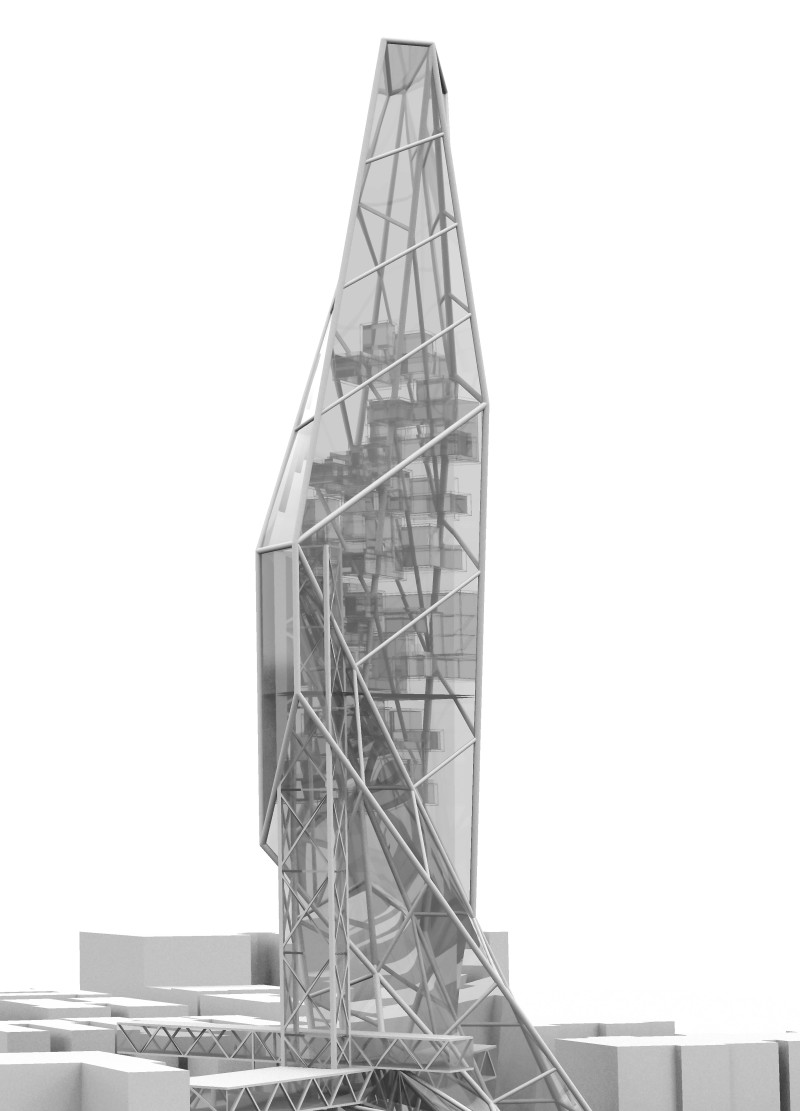5 key facts about this project
The design employs a sculptural form that reflects the vibrant spirit of its urban context, merging the structural and the artistic. The building features an innovative exterior shell that acts as an exoskeleton, allowing for open internal spaces free from conventional column layouts. This design facilitates a unique circulation system where a moving platform enables users to navigate within the building, thereby promoting social interaction.
The material selection plays a critical role in the project’s performance and aesthetic appeal. Key materials include steel for structural support, glass for transparency and light diffusion, precast slabs for lightweight construction, and curtain walls to enhance the visual connection to the surrounding environment. This choice of materials supports the project’s vision of inclusivity and interaction, reinforcing connections with the local community.
Unique Spatial Organization and Community Engagement
A significant feature of the Graffiti Tower is its modular layout. The spaces within the tower are designed to be adaptable, catering to varying community needs. Creative studios, office spaces for startups, and communal galleries are all integrated into the design, blurring the boundaries between different functions. The communal gallery space is located at the lower levels, extending onto the sidewalk, allowing local artists to showcase their work in a dynamic setting. This integration fosters a sense of ownership among residents and encourages participation in the local arts scene.
Additionally, the building’s placement against the backdrop of the elevated railway serves as a sound barrier, transforming potential noise into an opportunity for creative acoustic design. This thoughtful positioning emphasizes the tower’s role as a community hub rather than a standalone structure.
Innovative Interaction of Art and Architecture
The Graffiti Tower stands out from conventional architectural projects through its commitment to cultural authenticity and community involvement. By embracing elements of graffiti art in its design language, the project transcends traditional notions of architecture, creating a space that resonates with the local context. The dynamic interplay of light and materials enhances user experience while the architectural form facilitates an interactive environment.
The project's architectural plans illustrate a careful consideration of user flow and functionality. Architectural sections reveal the distinct layers of space, ensuring that every area can adapt to changing community dynamics. The design embodies architectural ideas that prioritize social engagement and creativity, positioning itself as a conducive environment for collaboration and expression.
For an in-depth understanding of the Graffiti Tower project, including architectural plans and sections, explore the full project presentation. Delve deeper into the architectural designs and ideas that shape this innovative space, and appreciate how it addresses the complex needs of the urban community.


























